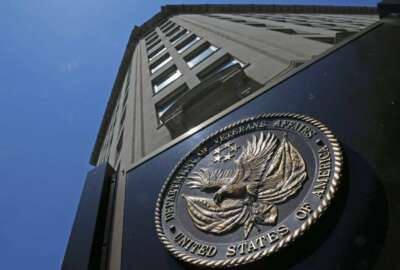

An ever-growing to-do list from Congress and $1 billion in technical debt are behind the Department of Veterans Affairs' push to modernize.
Count them all: the Department of Veterans Affairs is juggling a mile-long list of seemingly massive technology modernization projects.
It’s knee-deep in the modernization of its human resources systems, an ongoing financial management business transformation and an overhaul of its medical logistics supply chain.
Other modernization initiatives have been tied to major pieces of veterans legislation, like the IT capabilities needed to consolidate community care programs under the VA MISSION Act or the Appeals Modernization Act.
And then there’s that 10-year, $16 billion effort to implement a new, commercial electronic health record and achieve interoperability with the Defense Department.
An increasingly long to-do list from Congress is driving much of VA’s push to modernize, but so is nearly $1 billion in technical debt across the department, Dominic Cussatt, VA’s deputy chief information officer and principal deputy assistant secretary for information and technology, said last week at AFCEA’s Bethesda’s annual Health IT Summit.
It’s why the department is trying to strike the delicate balance of not only unifying active directories and increasing bandwidth at certain medical centers but also build or adopt entirely new systems that can handle VA’s growing desire to explore emerging IT.
“We’re really looking at how to re-architect our network,” Cussatt said. “As we do this modernization we don’t want to replace, we want to improve.”
VA, for example, is on track to move roughly half of its portfolio — about 350 applications and systems — to enterprise cloud by 2024, said Jim Gfrerer, the department’s CIO.
“That is not about cost savings; that’s about capabilities delivery,” he said. “Every system we have [for example] is dependent on a single-sign-on. Before we migrated to the cloud, we were at 70% availability. That is horrendous.”
The move to an enterprise cloud is part of a broader push to standardize IT programs and procedures across the department.
“We’ve shown that we can normalize our cybersecurity policies and our interoperability policies and get the things connected seamlessly and consolidate things in a way that makes it easier for us to manage the data and use things like artificial intelligence and RPA,” Cussatt said. “VA is in the midst of a huge transformation in terms of moving to an enterprise approach for everything that we do. We’ve set up a new enterprise portfolio management function. We’re moving to a product line management approach in how we service our customers.”
The department is also trying to embrace the enterprise approach as it begins to move to a new EHR in the coming months. A change management working group made up of clinicians and others from VA’s EHR modernization office meet regularly to develop common workflows and procedures for the new electronic record.
The department is on track to achieve initial operating capability with the new EHR at its first medical centers in the Pacific Northwest in less than two months.
“We really have an increased imperative to make sure that our infrastructure is sufficient,” Gfrerer said. “When you look at what we’ve done in Spokane and Seattle, the amount of resources we’ve poured in to make sure that the entire infrastructure — all the way from the pipes and the bandwidth going in to the endpoints and everything in between — it’s been an almost 100% refresh to make sure that the environment is stable.”
A new IT scorecard, which Gfrerer said VA is nearly finished developing, will help the department better track the department’s multi-faceted digital transformation strategy.
That, coupled with its embrace of technology business management (TBM) standards, should help the department better estimate and manage the costs and timelines associated with VA’s long IT to-do list.
“We’re going to get a lot more focused around those measures, those metrics and those outcomes around the specific projects. [We’ll] start to be probably a bit more deliberate on whether programs are succeeding or not,” Gfrerer said. “As we’ve moved to our DevSecOps model — and ultimately within the next we’re going to be better postured around our product line management — that’s going to create additional levels of accountability.”
Meanwhile, the sheer size, scope and number of major IT modernization initiatives aren’t lost on VA’s deputy secretary.
“I worked for a defense contractor before I joined the government. I can tell you … if we were undertaking all the modernization efforts at the same time that we are at the Department of Veterans Affairs, the board of directors would fire the leadership team,” Jim Byrne, VA’s deputy secretary, said. “We have to do it. It has to be done. But it’s in the ridiculously hard category to build a VA for the 21st century.”
Copyright © 2024 Federal News Network. All rights reserved. This website is not intended for users located within the European Economic Area.
Nicole Ogrysko is a reporter for Federal News Network focusing on the federal workforce and federal pay and benefits.
Follow @nogryskoWFED


